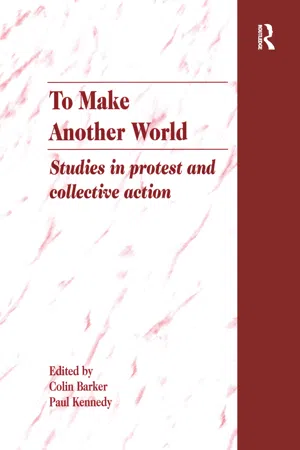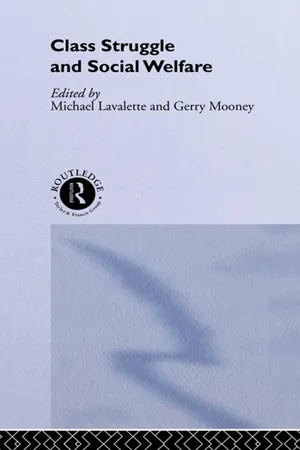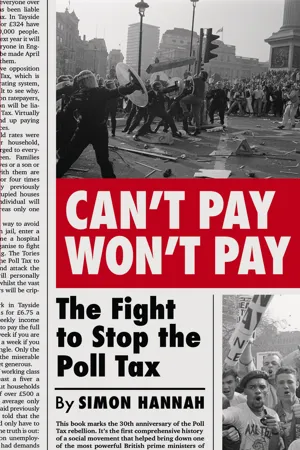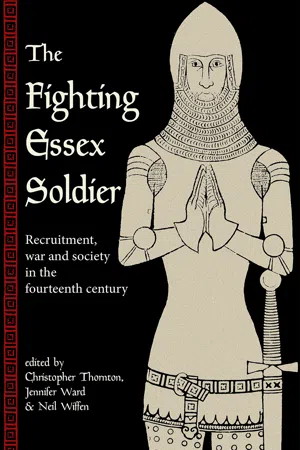History
Poll Tax
The poll tax was a tax levied on individuals, regardless of their income or wealth, and was historically used as a means of raising revenue by governments. It was often a source of contention and resistance, as it was seen as unfair and burdensome, particularly for the lower classes. The poll tax has been a significant issue in various historical periods, sparking protests and political movements.
Written by Perlego with AI-assistance
4 Key excerpts on "Poll Tax"
- eBook - ePub
To Make Another World
Studies in Protest and Collective Action
- Colin Barker, Paul Kennedy(Authors)
- 2017(Publication Date)
- Routledge(Publisher)
The Poll Tax was proposed by the 1987 Thatcher government as a new form of local tax to replace the rates. The Poll Tax, or community charge to give it its official name, was a flat rate tax on individual adults. The only concession to the ability to pay was that those on social security benefits, etc. only had to pay a proportion of the standard tax. However, this still meant for many individuals with little or no income that they had to pay local taxes for the first time, and at the same level as those on high incomes. Not surprisingly, with the benefit of hindsight perhaps, the Poll Tax was actively opposed by millions of people.In this chapter I shall examine in some detail the underlying moral response to the Poll Tax that contributed to generating the massive participation in the movement. I shall attempt this through an examination of the political morality of the activists in particular, and through their accounts, that of the participants. The interviews with activists that I draw upon below, were carried out in Leeds in 1990, and further details of these have been published elsewhere (Bagguley, 1995a).1 Furthermore, much of my argument will go against the grain of many contemporary accounts of class and politics in contemporary societies such as Britain. Briefly, such accounts often suggest that class is no longer a major political issue, that class-based inequalities no longer inform and motivate political action. Often it is asserted on the basis of rather flimsy evidence that class movements have been replaced by ‘new social movements’, or that consumption now has some kind of priority over production as a politically structuring set of social relations (see for instance Bauman, 1987; Lash and Urry, 1994).In contrast to some of what is argued in this literature, I find myself in closer affinity with the more empirical Weberian tradition of British sociology, which continually demonstrates the salience of class for voting behaviour and social identities among the working class in Britain (Goldthorpe and Marshall, 1994; Marshall et al 1988). Although largely associated with the Weberian tradition in British sociology the broad concept of ‘informed fatalism’ also has roots within the Marxian tradition (Abercrombie et al, 1980, pp.165-6). From this kind of analysis I want to develop the idea of ‘informed fatalism’, where working class protest does not routinely occur due to the perceived immutability of capitalist social relations. This helps to explain the lack of protest prior to, and after the Poll Tax. - eBook - ePub
- Michael Lavalette, Gerry Mooney(Authors)
- 2013(Publication Date)
- Routledge(Publisher)
It is certainly useful to recognize that government policy is not always fully thought out, rational or able to comprehend the range and variety of possible consequences it engenders. But the emphasis on the ‘cock-up’ theory again fails to locate the development in its context: the Tories’ increasing confidence and belief that this was the ‘moment’ to pursue their social policy agenda. While the rates could have been replaced by any of a range of local taxes, the Poll Tax most clearly expressed their ideological commitment to redistribute tax, increase inequality and curtail local government spending, thereby controlling left-wing councils.The Poll Tax was a clear piece of class legislation. By treating all adults over the age of 18 years as equals it attempted to reinforce the vast social and economic inequalities of wealth and power in society. The effect was to increase further the burden of paying for local welfare services on to the working class and to undermine any notion that tax should be related to income, wealth and ability to pay. To illustrate, the Guardian newspaper noted that:The Duke of Westminster, who used to pay £10,255 in rates on his estate has just learned his new Poll Tax: £417. His house-keeper and resident chauffeur face precisely the same bill.(Quoted in Burns 1992 : 10)In an earlier article on the first year of the Poll Tax (Lavalette and Mooney 1989 ) we produced the following table to emphasize the level of change the Poll Tax introduced.Table 11.1 The effects of the Poll Tax on a couple paying average domestic rate bill (selected Scottish districts)District Poll Tax, two people 1989–1990 (£ per year) Average domestic rate bill 1988–89 (£ per year) %increase Glasgow 612 506 20 Edinburgh 784 603 30 Dundee 684 486 34 Aberdeen 608 432 41 Dunfermline 586 465 26 Falkirk 518 427 21 Lochaber 474 359 32 Berwickshire 472 355 33 Wigtown 493 355 39 Orkney 296 194 52 These increases were based on two people paying the tax, but all people over the age of 18 years were liable to pay – even those on income support had to pay at least 20 per cent. Thus many working-class families faced steeper bills than these figures indicate. Further, the first bills were lower than they would be in preceding years due to government subsidy to aid the transition to the new tax. The situation was clear, the Poll Tax represented an immense extra burden on working-class families, a burden which many simply could not carry. - eBook - ePub
Can't Pay, Won't Pay
The Fight to Stop the Poll Tax
- Simon Hannah(Author)
- 2020(Publication Date)
- Pluto Press(Publisher)
For the left there was a very simple line of argument, as described by Michael Lavalette and Gerry Mooney: ‘The Poll Tax was a clear piece of class legislation. By treating all adults over the age of 18 as equals it attempted to reinforce the vast social and economic inequalities of wealth and power in society. The effect was to increase further the burden of paying for local welfare services on to the working class and to undermine any notion that tax should be related to income, wealth and ability to pay.’ 29 Labour MP and Militant supporter Dave Nellist described it simply as ‘Robin Hood in reverse – a wealth transfusion from the poor to the rich.’ 30 Tory MP William Waldegrave admitted later that ‘it was impossible to argue against the widespread impression of a huge shift to the better off, because it was true’. 31 Other opponents pointed to a central, humanist ethical consideration: you could tax property, profit, purchases and possessions, but you could not tax people. Then there was the mechanics of the proposed tax itself. The joint and several liability of couples was also challenged by campaigners: What if a woman was living with a man after divorcing? What if there was domestic violence or controlling behaviour? How would the council determine who counted as co-habiting ‘couples’? Would estates be filled with sex snoopers to see if people were copulating on a regular basis? Jo Richardson MP made a strong feminist case against the tax: ‘women, who are almost half the labour force, still earn less than three quarters of men’s average pay. The government’s refusal to take account of ability to pay the flat rate Poll Tax is blatant discrimination against women.’ 32 There was also serious concern for the plight of carers, the majority of whom were women. At the time there were 6 million people caring for those with disabilities or the elderly in their own homes - eBook - ePub
The Fighting Essex Soldier
Recruitment, War and Society in the Fourteenth Century
- Christopher Thornton, Jennifer Ward, Neil Wiffen(Authors)
- 0(Publication Date)
- Essex Publications(Publisher)
They are organised by residency, through county, hundred and vill, and are inconsistent between the different areas, possibly owing to different interpretation of instructions by the collectors or variations in spelling. Fenwick has suggested that the tax was an attempt to spread the financial burden onto a wider base throughout England. ‘The Commons’ aim in imposing the Poll Taxes was to ensure that all, high or low, normally exempt or not, who could pay the tax did so … their aim was simply to relieve themselves of the main burden of tax.’ 25 By shifting the basis of taxation to a per capita basis, more individuals were brought into the ‘national’ tax system, although the three Poll Taxes did vary significantly. In 1377 all persons over the age of 14 were expected to pay 4d, with exemptions for the clergy and genuine paupers. In 1379 paupers and clergy were still exempt, as were married women, and the age of liability was raised to 16. This time the charges were graduated from a base rate of 4d to a top rate of 10 marks. 26 The final collection in 1381 changed the age of liability to 15 and continued to exempt paupers and clergy, although not married women. The method of calculating liability changed again, with each vill being liable for 1s per taxable person, with a person’s individual contribution varying according to their ability to pay, with a minimum liability of 4d and a maximum of 20s. The differences between the collections limit some of the demographic conclusions that can be drawn
Index pages curate the most relevant extracts from our library of academic textbooks. They’ve been created using an in-house natural language model (NLM), each adding context and meaning to key research topics.
Explore more topic indexes
Explore more topic indexes
1 of 6
Explore more topic indexes
1 of 4



